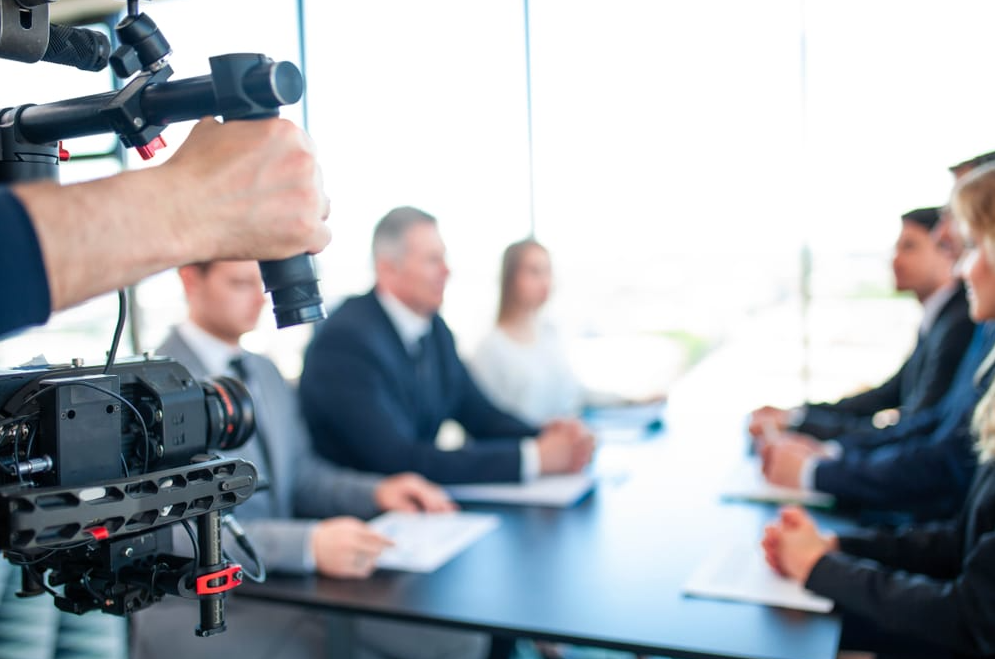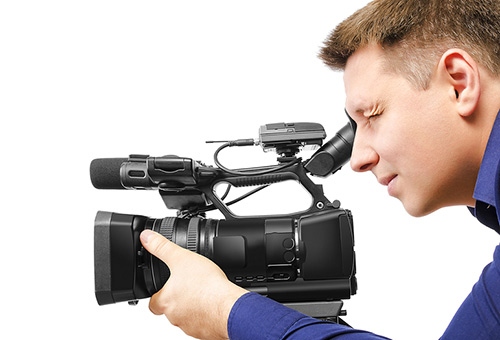The Role of Legal Videography in Depositions and Trials
Lawful videography has actually arised as a crucial device in both depositions and tests, supplying a diverse technique to recording witness statements. As legal experts increasingly recognize its worth, it motivates a deeper assessment of exactly how these visual records can influence juror understandings and trial results.
Value of Lawful Videography
Legal videography plays a critical function in the documentation and discussion of depositions and tests. This customized area combines technical skills with lawful expertise to produce a trustworthy record of proceedings that can dramatically affect case end results. The appearance of lawful videography boosts the understanding of witness statement, allowing jurors and courts to observe not only the talked words however also the demeanor, feelings, and body language of the witnesses.

The value of legal videography extends past the court; it also plays an essential duty in protecting proof for future recommendation, whether for charms or further lawful action. As such, its assimilation into the lawful process is essential for ensuring a reasonable and accurate depiction of the facts, inevitably adding to the pursuit of justice.

Process of Legal Videography
While catching the subtleties of depositions and trials, the process of lawful videography entails several vital actions that ensure high-quality, precise recordings. At first, a specialist lawful videographer prepares by reviewing the situation materials and comprehending the details requirements of the deposition or trial. This preparation includes familiarizing themselves with the participants and the context, which aids in catching essential information.
On the day of the recording, the videographer establishes up the essential tools, which commonly consists of high-def electronic cameras, microphones, and correct lights. Making certain optimum angles and audio top quality is vital, as it straight affects the efficiency of the recording. The videographer interacts with attorneys and participants to establish methods, making certain that every person recognizes the recording procedure.
During the deposition or trial, the videographer meticulously videotapes the process, paying close interest to both verbal and non-verbal cues. legal videography. This consists of recording the attitude and reactions of witnesses and attorneys. After the session ends, the videographer might edit the footage for quality and conformity with lawful criteria, creating a last item that accurately reflects the process for future referral and use in legal contexts
Advantages in Depositions
The consolidation of videography in depositions offers countless benefits that enhance the total process of collecting proof. One primary advantage is the ability to record witness statements with aesthetic and acoustic fidelity, supplying a more exact representation of the witness's behavior, tone, and body language. This multidimensional technique allows lawyers and juries to examine have a peek at these guys integrity more properly than standard written records alone.
Furthermore, videographed depositions act as a powerful device for preserving statement. Needs to a witness ended up being that site inaccessible for trial, their taped deposition can be played in court, ensuring that their proof continues to be available and pertinent. This aspect substantially lowers the risk of shedding critical information that might influence case results.
In addition, making use of legal videography promotes far better prep work for attorneys. Evaluating video footage enables lawful teams to assess and refine their approaches, identifying strengths and weaknesses in their situations. This primary benefit can lead to more compelling presentations in court.
Finally, videography improves the general professionalism and reliability of the deposition procedure, instilling confidence in clients relating to the thoroughness of their lawful depiction. By leveraging modern technology, attorneys can substantially boost the performance of depositions.
Effect On Trials
In many trials, the integration of videography can substantially influence the presentation of evidence and the jury's understanding. Legal videography catches witness statements and vital proof in a dynamic format, allowing jurors to engage with the material on multiple degrees. This aesthetic element improves the narration element of a test, supplying context and emotional resonance that traditional text-based evidence might do not have.
Additionally, video clip recordings can function as effective tools for impeachment during cross-examination. When discrepancies emerge in that site between a witness's prior statements and their court room statement, video evidence gives an unbiased recommendation that can sway jurors' opinions. This immediacy and clarity can bolster the reliability of a party's story while all at once weakening opposing debates.
Furthermore, the use of videography can aid enhance complicated info, making it much more accessible to jurors that may battle to understand detailed information presented exclusively through spoken testimony. By incorporating visuals with auditory details, legal videography can boost retention and understanding, ultimately affecting the jury's decision-making procedure. The impact of videography in trials expands beyond simple aesthetics; it plays a vital duty in shaping the lawful landscape and end results.
Future Trends in Legal Videography
As we look toward the future of legal videography, numerous emerging trends guarantee to improve its role within the court. One substantial trend is the combination of expert system (AI) in video evaluation and editing and enhancing - legal videography. AI can enhance the procedure of recognizing key moments in videotaped depositions, allowing attorneys to rapidly access appropriate web content, therefore boosting efficiency in case preparation
Furthermore, the increase of digital fact (VIRTUAL REALITY) and augmented reality (AR) innovations is expected to transform exactly how jurors experience proof. By submersing jurors in a substitute atmosphere, these modern technologies can give an extra extensive understanding of intricate scenarios, leading to more informed considerations.

Additionally, the boosting demand for remote depositions, sped up by the COVID-19 pandemic, will likely continue. Legal videographers will certainly require to adjust to new software application and platforms to guarantee premium recordings in online settings.
Lastly, the expanding focus on data safety and security will demand more stringent procedures for storing and sharing video clip proof. As the legal landscape evolves, lawful videographers need to stay abreast of these trends to keep their significance and effectiveness in the judicial procedure.

Conclusion
In recap, lawful videography offers an essential function in the judicial procedure, boosting the integrity of depositions and trials. As innovation proceeds to advance, lawful videography is poised to further transform its function within the legal landscape.
Comments on “High-Resolution Legal Videography for Critical Evidence Recording.”